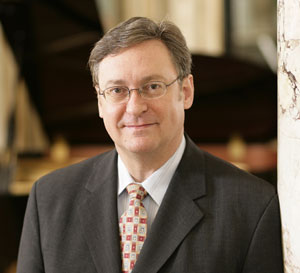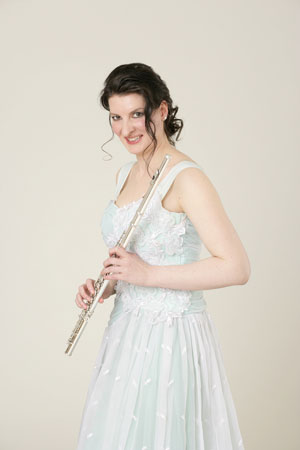Concert Haydn and Compositions from Eastern Europe
"Ulrike Anton - flute, Russell Ryan - piano"
By Cecelia Porter


A notable highlight of the numerous cultural events dedicated to Joseph Haydn’s Anniversary at the Austrian Embassy in Washington, D.C. was the concert by flutist Ulrike Anton and pianist Russell Ryan, which took place on February 5, 2009. Austrian Information is happy to bring an enthusiastic review of this memorable evening by The Washington Post’s classical music critic, Cecelia Porter.
Flutist Ulrike Anton and pianist Russell Ryan returned to the Austrian Embassy on February 5 with a splendid tribute to the “Haydn Year,” marking the 200th anniversary of Austrian composer Franz Joseph Haydn’s death with three of his works. The concert also included Bohuslav Martinu’s Sonata, Bela Bartok’s “Suite Paysanne Hongroise” and “O, Santa Caecilia und andere Pusztavoegel” by another Austrian composer, Otto M. Zykan, who died in 2006.
Anton and Ryan make a perfect team. Her tone quality closely approaches what flutists admire as “French”—that is, a sound that is both concentrated and sweet, but quite different from what is often called “American,” which tends to be more open and forceful. As always, Ryan was acutely sensitive at the keyboard, carefully balancing his roles as an equal partner with the flute, yet also its responsive support. He precisely matched Anton’s delicate resonance, plumbing all the resources of the Embassy’s Boesendorfer instrument.
Haydn’s Trio No. 2 is 18th-century Hausmusik meant originally for domestic music making that prepared the way for the 19th-century salon. Ryan underlined Haydn’s harmonic daring and his way of toying with the listener’s expectations. The players also gave a brilliant reading of Haydn’s Sonata in G Major, Op. 77, No. 1, and frolicked buoyantly through his “Floetenuhrstuecke.”
The Zykan piece refers to the Austrian Burgenland (coincidentally Haydn’s birthplace), whose wetlands landscape is a bird haven. It is also home to both Austrian and Hungarian musical styles, a rich amalgam that Anton fully conveyed through a broad spectrum of tone colors that one might imagine akin to bird songs. Overall, the duo’s performance reflected an aura of refreshing immediacy.
Bartok’s Suite brought the musicians’ most dramatic playing, conveying the composer’s subtle fusion of folk idioms cast in the rhythmic fervor of dance. Dating from 1945, the Martinu is an exciting piece with a sense of tight structure clearly illuminated by the performers.
Cecelia Porter, Contributing Classical Music Critic, the Washington Post, is the author of numerous publications.
